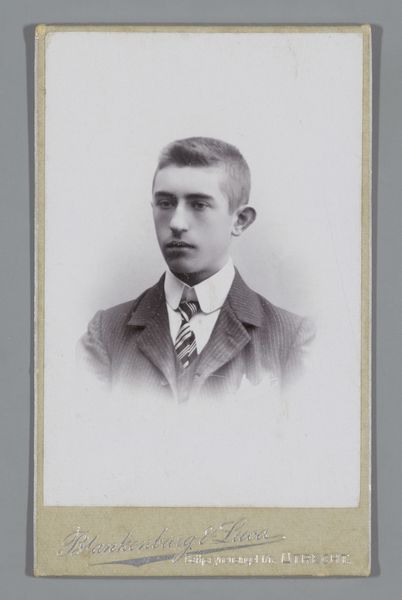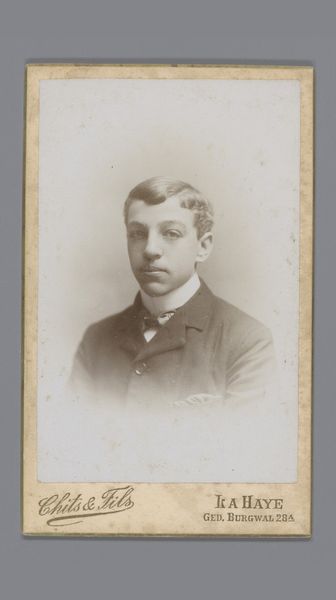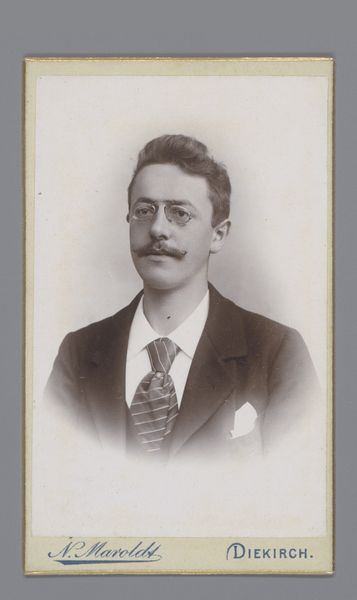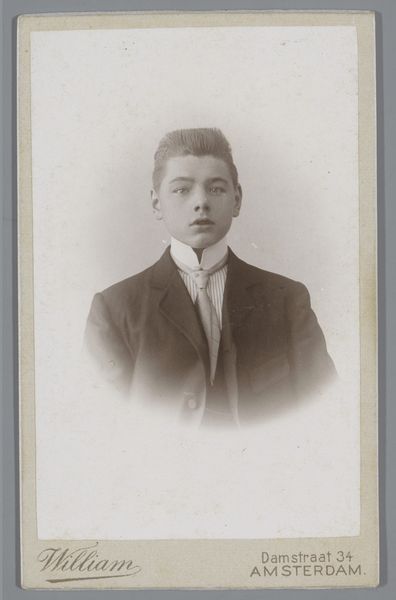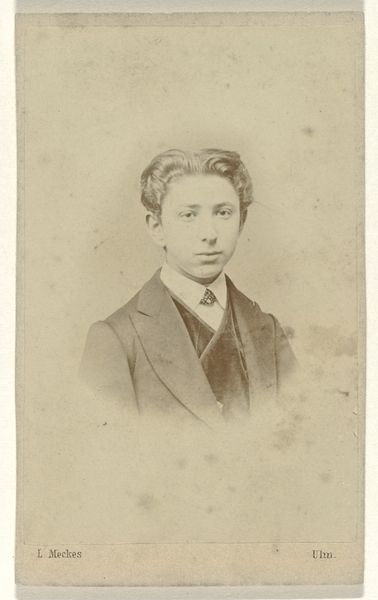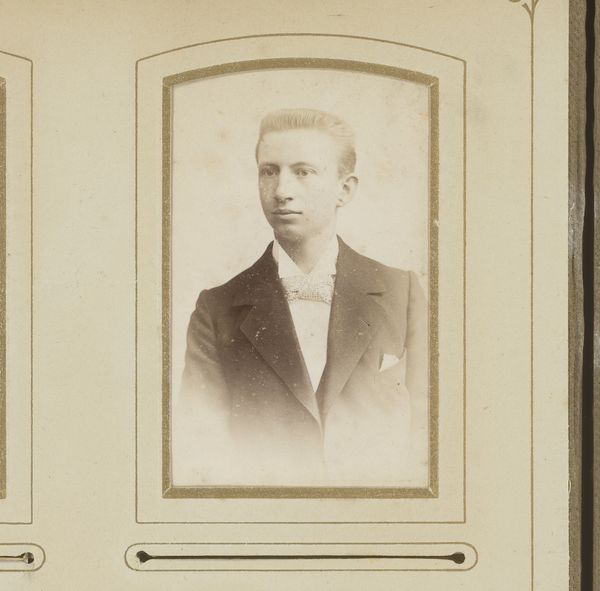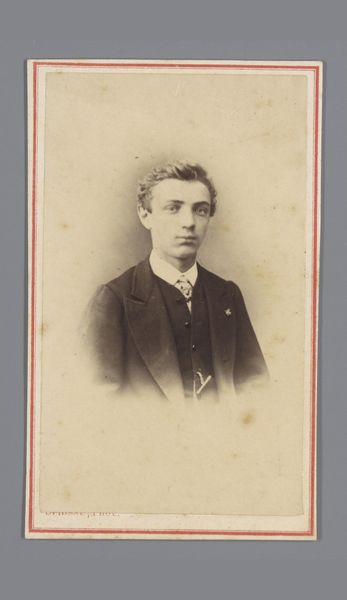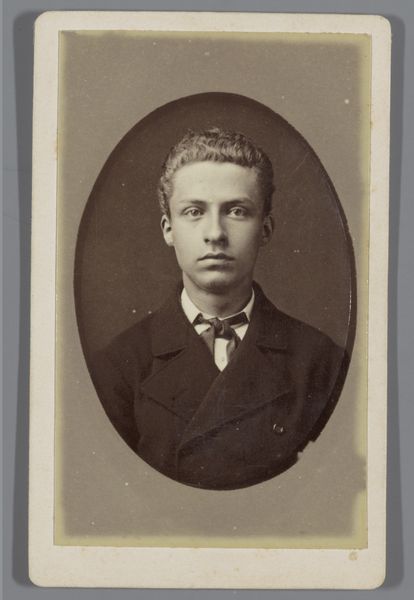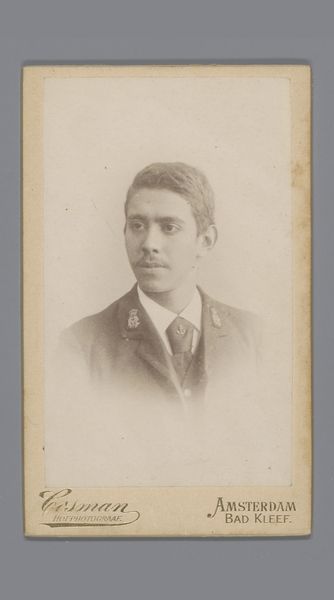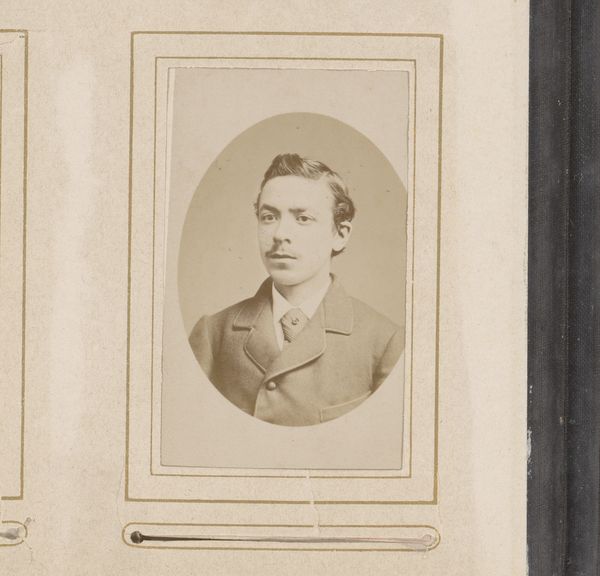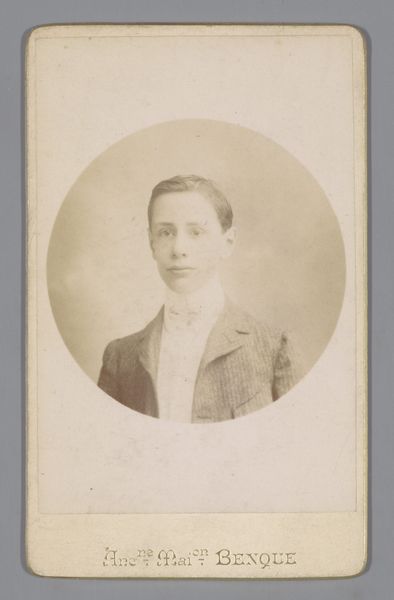
paper, photography, gelatin-silver-print
#
portrait
#
paper
#
photography
#
gelatin-silver-print
#
paper medium
#
realism
Dimensions: height 105 mm, width 66 mm
Copyright: Rijks Museum: Open Domain
Editor: Here we have "Portrait of an Unknown Young Man," a gelatin silver print, placing it somewhere between 1894 and 1907, by Eduard Donkersloot. It has this delicate, almost ethereal quality. What strikes you most when you look at it? Curator: The immediate resonance for me lies in the very act of preservation through image. Consider, an ‘unknown young man’ is granted immortality, of sorts, by this technology. Doesn’t that invoke a desire to decode him? To piece together fragments of a forgotten narrative? Editor: Definitely. There’s a longing to know his story. Curator: Note the formality of the suit, the almost hesitant expression. He is clearly performing a role – that of respectable citizen, hopeful perhaps. This performance, echoed in countless portraits of the era, reflects society's aspirations and anxieties, a cultural fingerprint pressed onto photographic paper. Does the sepia tone amplify this sense of distance, do you think? Editor: I think so. It lends the photo a sense of nostalgia, or something irretrievable. The photo is a relic. Curator: Precisely. It becomes an artifact, carrying layers of meaning beyond just a likeness. Look closely: the very texture of the paper, the subtle imperfections, the studio markings – these are all visual cues hinting at the production and consumption of images during a transitional era. Editor: So, it's more than just a picture of someone. It’s also a document about a specific moment in photographic history. Curator: Precisely! And this invites a dialogue, almost a meditation, on what remains and what fades away. The image whispers across time, prompting us to reflect on memory and meaning. Editor: I never thought about portraiture like that before. Thank you! Curator: My pleasure! It’s often in the subtle visual languages of these "unknowns" that cultural histories reside.
Comments
No comments
Be the first to comment and join the conversation on the ultimate creative platform.
